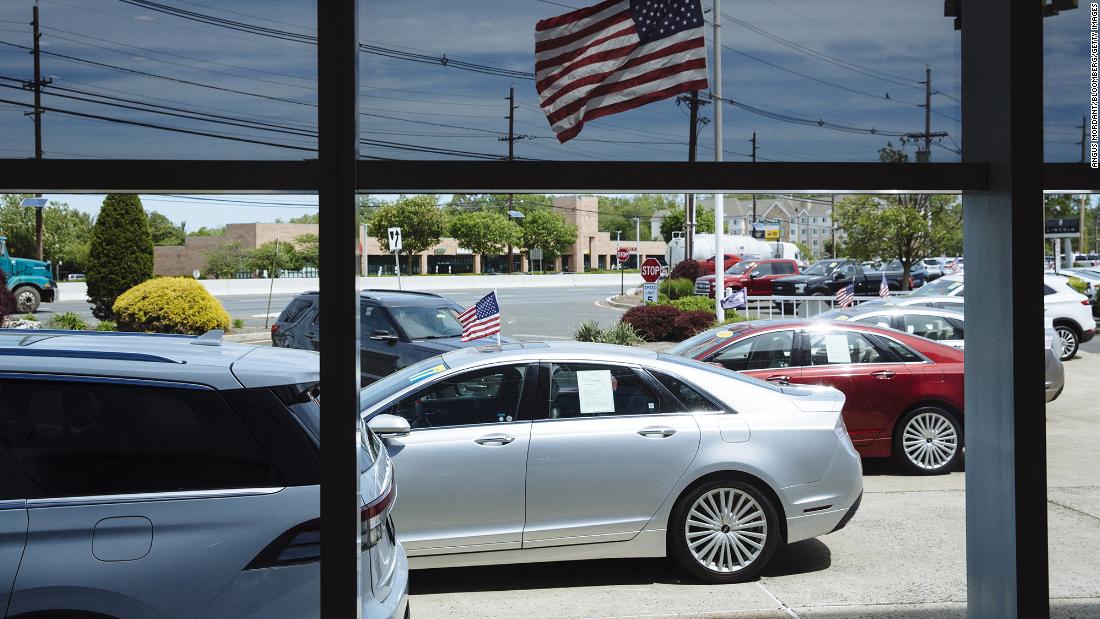Shopping for a car? Watch out for the ‘destination fee’ – CNN

This non-negotiable fee is the amount automakers charge dealers to ship the car to their lot. It’s usually listed at the bottom of a new car’s price sticker after the price of the car itself.
And, over the past decade, those fees have increased rapidly, according to an investigation by Consumer Reports. Destination charges have gone from an average of $839 in 2011 to $1,244 in 2020, according to the Consumer Reports. That’s more than 2.5 times the rate of inflation.
It may seem weird, but federal law requires that these fees must be tacked on separately. Automakers aren’t allowed to just include the shipping cost in the final price of the vehicle, the way it’s done for virtually every other product we buy. Regulations say the price labels on cars must include “the amount charged, if any, to such dealer for the transportation of such automobile to the location at which it is delivered to such dealer.”
To keep things equal, automakers charge the same destination fee amount for each vehicle model, regardless of where it’s sold. So someone buying a Ford Mustang in San Diego will pay a $1,195 destination fee, the same as in Detroit, even though the dealer may only be a few miles from where the car is built. Likewise, for a Ford Expedition with its $1,695 destination fee.
Destination fees can cost more than some options. On a Dodge Charger, for instance, the $1,495 delivery fee is $200 more than the cost of a power sunroof.
The main reasons destination charges have been on the rise, spokespeople for General Motors and Ford said, are increases in the cost of shipping, in general, and increases in the size of the vehicles themselves.
As Americans’ preferences have shifted toward trucks and SUVs, that’s meant higher shipping costs since they’re just bigger and, therefore, fewer vehicles can be packed on each truck or train car, said GM spokesman Jim Cain.
That would make sense, said Ron Montoya, a consumer advice editor with the automotive website Edmunds.com.
“These trucks weigh more with every generation,” he said “They’re always getting a ton of new content and safety features and so they are going to take up more space and cost more in terms of fuel and all that to transport.”
Between 2010 and 2020, trucks and SUVs went from 45% of all new vehicles sold to 73%, according to data from Edmunds.com. Meanwhile, sales of traditional cars have dropped from about half of new vehicle sales to just under a quarter.
Overall, the costs of operating big semi trucks across all industries increased by about 10 cents a mile between 2010 and 2018, according to data from the American Transportation Research Institute. Those costs started to decline in the second half of 2019 and in 2020 as a result of the pandemic, said Daniel Murray, senior vice president of ATRI, but the overall trend has been one of increasing costs.
About 75% of new passenger vehicles make at least part of their journey to the dealership on trains, according to the American Association of Railroads. General costs for rail shipping, exclusive of volatile fuel prices, have followed a similar trend, based on data from the AAR.
Given the complexity of how destination fees are calculated and then equalized across the nation, it’s difficult to determine whether carmakers are profiting from them. No automaker provided Consumer Reports with a detailed breakdown of the calculations, said Monticello.
If they are profiting, said Edmunds.com’s Montoya, it’s not by a lot. Car prices have increased annually and there’s probably enough room there, especially on these more expensive trucks and SUVs everyone has been buying, to make money. Carmakers hardly need to sneak in more profit through fees, he said.
As far as a car shopper is concerned, there’s no point asking a dealer to reduce the destination fee.
“The first rule of destination charges is you don’t talk about destination charges,” said Consumer Reports’ Monticello, referring to a line from the movie “Fight Club.”
If you focus too much on that fee, said Montoya, you could be missing bigger available discounts, anyway.
What you can do, Monticello and Montoya both suggested, is keep in mind that you will be paying that amount, know exactly what it is, and include that and other fees in the total figure you’re willing to pay for the vehicle. Then negotiate based on that total number rather than getting hung up on any one figure.
Published at Fri, 26 Feb 2021 18:08:00 +0000





Comments
Loading…